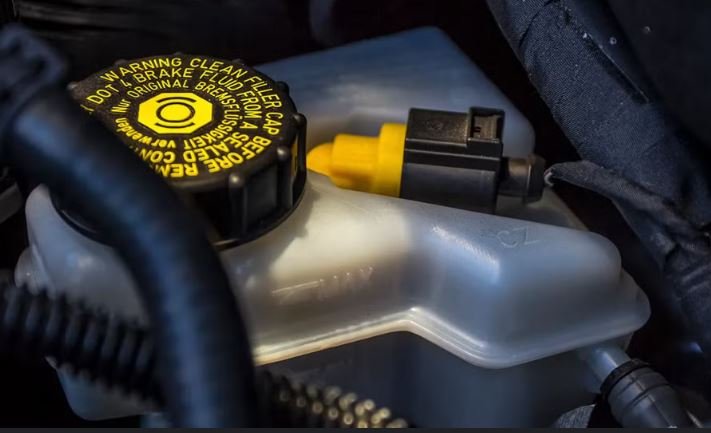Brake fluid plays a crucial role in the operation of your vehicle’s braking system. It transfers the force from the brake pedal to the brake components, ensuring effective stopping power. Understanding brake fluid basics helps you maintain your braking system’s performance and safety. This guide covers essential information about brake fluid, its types, and maintenance tips.

1. What Is Brake Fluid?
Brake fluid is a hydraulic fluid used in a vehicle’s braking system to transfer force from the brake pedal to the brake components. It operates under high pressure and temperature, enabling the brakes to function efficiently. Brake fluid’s primary job is to ensure that the force applied to the brake pedal translates into stopping power.
2. Types of Brake Fluid
There are several types of brake fluid, each with different properties and specifications. The most common types include:
- DOT 3: A glycol-based fluid with a moderate boiling point. Suitable for many standard vehicles, but may absorb moisture over time, which can affect performance.
- DOT 4: Offers a higher boiling point compared to DOT 3, making it suitable for vehicles that require better performance under high temperatures.
- DOT 5: A silicone-based fluid that does not absorb moisture. It is less common and typically used in classic or specialty vehicles.
- DOT 5.1: A glycol-based fluid with a high boiling point similar to DOT 4 but compatible with ABS systems.
3. Why Brake Fluid Matters
Brake fluid is essential for effective braking performance. It maintains the hydraulic pressure required to operate the brake calipers and ensure that the vehicle stops reliably. Proper brake fluid levels and quality are crucial for avoiding brake fade, ensuring safety, and preventing brake system damage.
4. Signs of Low or Contaminated Brake Fluid
Monitoring brake fluid levels and quality is important. Signs of low or contaminated brake fluid include:
- Soft Brake Pedal: A soft or spongy brake pedal can indicate low brake fluid levels or air in the brake lines.
- Brake Warning Light: Illumination of the brake warning light on your dashboard may signal low brake fluid levels.
- Dark or Dirty Fluid: Brake fluid that appears dark or dirty may be contaminated and require replacement.
5. Checking Brake Fluid Levels
Regularly check your brake fluid levels to ensure they are within the recommended range. Most vehicles have a brake fluid reservoir located near the brake master cylinder. Check the fluid level and top it up if necessary, using the recommended brake fluid type for your vehicle.
6. Changing Brake Fluid
Brake fluid absorbs moisture over time, which can lower its boiling point and affect braking performance. Most manufacturers recommend changing the brake fluid every 2 to 3 years. Follow your vehicle’s maintenance schedule and consult a professional mechanic for brake fluid replacement.
7. Proper Brake Fluid Handling
Handle brake fluid with care, as it is corrosive and can damage paint and other surfaces. Use clean containers and avoid mixing different types of brake fluid. Always use the brake fluid specified by your vehicle manufacturer to ensure compatibility and performance.
8. Effects of Moisture on Brake Fluid
Moisture absorption can reduce brake fluid’s effectiveness and lead to brake fade. Over time, moisture can cause corrosion in the brake system and damage components. Regularly replacing brake fluid helps prevent these issues and ensures reliable braking performance.
9. DIY Brake Fluid Replacement
If you choose to replace brake fluid yourself, follow these steps:
- Lift the Vehicle: Use a jack to lift the vehicle and secure it with jack stands.
- Locate the Reservoir: Find the brake fluid reservoir and remove the cap.
- Drain Old Fluid: Open the bleeder valves on each brake caliper and let the old fluid drain out.
- Add New Fluid: Pour the new brake fluid into the reservoir and bleed the brakes to remove air.
- Check and Test: Ensure the brake fluid level is correct and test the brakes to ensure proper function.
10. Consult a Professional
If you are unsure about handling brake fluid replacement or if you experience brake issues, consult a professional mechanic. They can ensure that the brake fluid is replaced correctly and that your braking system operates safely and efficiently.
Conclusion
Understanding brake fluid basics is essential for maintaining your vehicle’s braking system. Regularly checking brake fluid levels, choosing the right type, and replacing it as needed ensures optimal braking performance and safety. Pay attention to signs of low or contaminated fluid and consult with a professional to address any issues.




